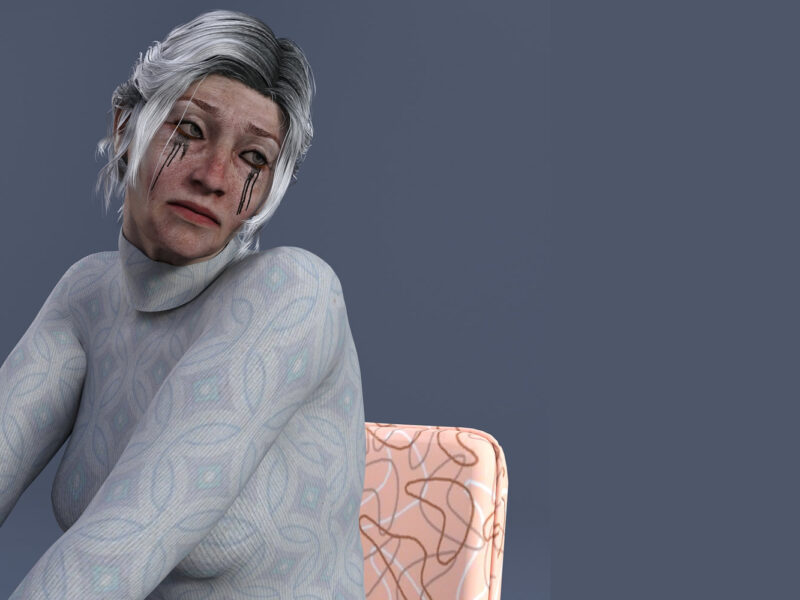Legend has it Marie Antoinette’s hair went gray overnight right before her 1791 beheading.
Although the legend is incorrect–hair that is already growing out of the follicle does not change its color–a study by Columbia University Vagelos College of Physicians and Surgeons has provided quantitative evidence linking psychological stress and graying hair.
Although it might seem obvious that stress can cause graying to accelerate, researchers were shocked to find that hair color can still be restored if stress is removed. This contrasts with a study done in mice which suggested that stress-induced gray hairs can be permanent.
The study was published in eLife. It has more significance than just confirming decades-old speculations about stress’ effects on hair color. Martin Picard, PhD, is the senior author of the study and associate professor of behavioral medicine at Columbia University Vagelos College of Physicians and Surgeons.
Picard states that understanding the mechanisms that allow “old” gray hairs to return in their “young” pigmented state could provide new insights about human aging and stress.
“Our data add to a growing body of evidence demonstrating that human aging is not a linear, fixed biological process but may, at least in part, be halted or even temporarily reversed.”
Investigating aging through hair studies
Picard states that hair can contain information about our biological history, just as rings on a tree trunk could hold information about the past decade. “When hairs are still under the skin as follicles, they are subject to the influence of stress hormones and other things happening in our mind and body. Once hairs grow out of the scalp, they harden and permanently crystallize these exposures into a stable form.”
Although people believe that psychological stress can cause gray hair to grow faster, scientists disagree on the link due to the inability of sensitive methods to correlate stress levels with hair pigmentation at the single-follicle level.
Ayelet Rosenberg, the first author of the study and a student at Picard’s laboratory developed a new technique for taking high-detail images of very small slices of human hairs in order to measure the amount of pigment loss. Each slice is approximately 1/20th of an inch wide and represents approximately one hour of hair growth.
Picard states that if you look at hair with your eyes, it will appear the same color everywhere unless there are major changes. “Under a high-resolution scanner, you see small, subtle variations in color, and that’s what we’re measuring.”
Researchers analyzed 14 individual hairs. The results were compared to each volunteer’s stress journal, where individuals were asked for feedback on their calendars and rate the level of stress each week.
Picard claims that the investigators noticed immediately that gray hairs can naturally regain their original color. This was not quantitatively quantified before.
Shannon Rausser (second author of the paper, and student in Picard’s laboratory), compared hairs with stress diaries to discover striking associations between stress, hair graying, and sometimes a reverse of graying when stress is lifted.
Picard explains that one person went on vacation and five of the hairs on his head returned to dark during vacation.
Blame the mind-mitochondria link
Researchers also measured the levels of thousands upon thousands of proteins in hairs to better understand why stress can cause gray hair. They also looked at how protein levels change over time.
Researchers discovered that hair color changes can cause changes in 300 proteins. They also developed a mathematical model to suggest stress-induced mitochondrial dysfunction may be responsible for gray hair.
Picard says that mitochondria are often referred to as the powerhouses of a cell. But that is not their only role. “Mitochondria act as little antennas within the cell, responding to various signals including psychological stress.
The mitochondria link between stress and hair color is different from the one discovered in a recent study on mice. This study found that stress-induced hair graying was caused irreversibly by a loss of stem cells in hair follicles.
“Our data show that graying is reversible in people, which implicates a different mechanism,” says co-author Ralf Paus, PhD, professor of dermatology at the University of Miami Miller School of Medicine. “Mice have very different hair follicle biology, and this may be an instance where findings in mice don’t translate well to people.”
Only some hair re-pigmentation is possible
It is important to reduce stress in your daily life, but it will not necessarily make your hair normal.
Picard states that based on mathematical modeling, hair must reach a threshold before turning gray. “When the hair is close to the threshold due to biological age and other factors it will transition to gray.
“But we don’t think that reducing stress in a 70-year-old who’s been gray for years will darken their hair or increasing stress in a 10-year-old will be enough to tip their hair over the gray threshold.”
Source: https://www.cuimc.columbia.edu/

